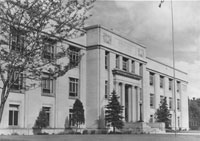Summary 2014 WY 33
Summary of Decision March 5, 2014
Chief Justice Kite delivered the opinion for the Court. Affirmed.
Case Name: IN THE MATTER OF THE WORKER’S COMPENSATION CLAIM OF: BENNIE JOHNSON v. STATE OF WYOMING, ex rel., WYOMING WORKERS’ SAFETY AND COMPENSATION DIVISION
Docket Number: S-13-0115
URL: http://www.courts.state.wy.us/Opinions.aspx
Appeal from the District Court of Sweetwater County the Honorable Nena James, Judge
Representing Appellant: Donna D. Domonkos, Cheyenne, Wyoming.
Representing Appellee: Peter K. Michael, Wyoming Attorney General; John D. Rossetti, Deputy Attorney General; Michael J. Finn, Senior Assistant Attorney General; Peter Howard, Legal Intern.
Date of Decision: March 5, 2014
Facts: The State of Wyoming ex rel. Wyoming Workers’ Safety and Compensation Division (the Division) denied Bennie Johnson’s requests for preauthorization of bilateral total knee replacements and payment of other medical bills associated with his knees on the grounds the current condition of his knees was not related to a 1992 work injury. The Medical Commission held a contested case hearing and upheld the Division’s decision. During the hearing it admitted into evidence, over Mr. Johnson’s objection, three exhibits.
Issues: Mr. Johnson presents the following issues for this Court’s consideration: ISSUE I. Whether the Commission acted arbitrarily, capriciously or otherwise not in accordance with the law when it admitted into evidence unreliable and irrelevant evidence over objection. ISSUE II. Whether the [Medical Commission’s] decision is supported by substantial evidence. The Division presents the same issues, although they are phrased differently.
Holdings/Conclusion: We conclude the Medical Commission did not commit prejudicial error by admitting the exhibits and substantial evidence supports its decision. We, therefore, affirm.
Summaries are prepared by Law Librarians and are not official statements of the Wyoming Supreme Court
[SPECIAL NOTE: This opinion uses the "Universal Citation." It was given an "official" citation when it was issued. You should use this citation whenever you cite the opinion, with a P.3d parallel citation. You will also note when you look at the opinion that all of the paragraphs are numbered. When you need to provide a pinpoint citation to a quote the universal portion of the citation will use that paragraph number. The pinpoint citation in the P.3d portion will need to have the reporter page number. If you need assistance in putting together a citation from this, or any future opinion using the Universal Citation form, please contact the Wyoming State Law Library and we will provide any needed assistance]


